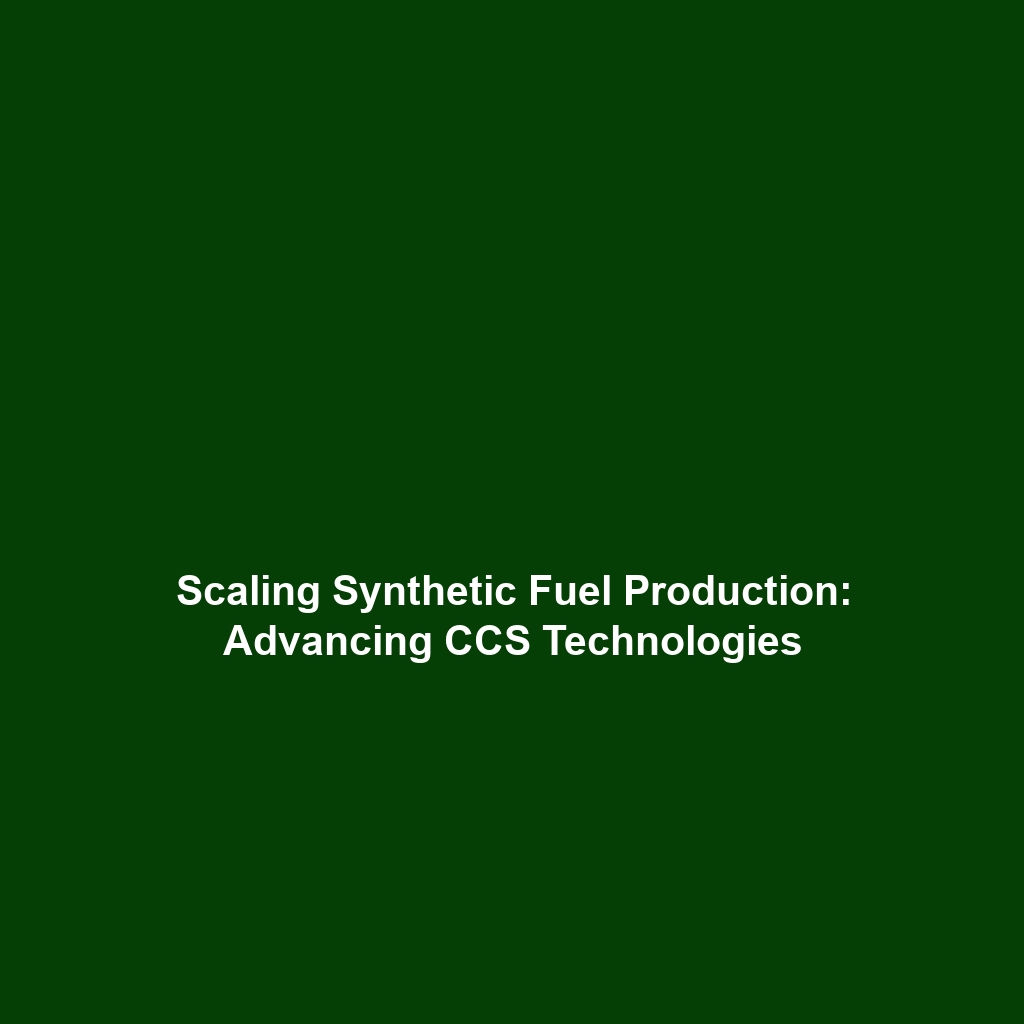Ongoing Monitoring and Regulation in Carbon Capture & Storage (CCS)
Introduction
Ongoing monitoring and regulation are essential to ensure the safety and effectiveness of Carbon Capture & Storage (CCS) projects. As climate change increasingly threatens our environment and public health, CCS technology has emerged as a promising method to reduce greenhouse gas emissions. To maximize its benefits, consistent monitoring and stringent regulations must be integrated into CCS initiatives to safeguard environmental and human health.
Key Concepts
Understanding Carbon Capture & Storage (CCS)
Carbon Capture & Storage (CCS) refers to a suite of technologies designed to capture carbon dioxide emissions from sources like power plants before they enter the atmosphere. The captured CO2 is then transported and stored underground in geological formations. Key concepts include:
- Monitoring Techniques: These are methods to track the performance and safety of CCS sites, including ground sensing technologies and satellite analysis.
- Regulatory Framework: Strong regulations ensure compliance with environmental standards and promote transparency in operations.
- Risk Assessment: Identifying potential hazards associated with CO2 storage is critical for risk mitigation.
Applications and Real-World Uses
Ongoing monitoring and regulation significantly enhance the safety and efficacy of CCS projects. Notable applications include:
- Power Generation: CCS technology is employed in coal and natural gas power plants, allowing them to continue operating while minimizing their carbon footprint.
- Industrial Processes: Industries such as cement and steel production utilize CCS solutions to capture emissions generated during production.
- Enhanced Oil Recovery (EOR): Captured CO2 is injected into declining oil fields to increase extraction, simultaneously sequestering carbon dioxide.
Current Challenges
Several challenges affect the effective implementation of ongoing monitoring and regulation for CCS:
- High costs of monitoring technologies and storage infrastructure.
- Lack of comprehensive regulatory frameworks in certain jurisdictions.
- Public skepticism regarding the safety and permanence of CO2 storage.
- Limited data on long-term storage impacts and performance.
Future Research and Innovations
Future research and innovations promise to enhance the role of ongoing monitoring and regulation in CCS projects. Areas of focus include:
- Advanced Monitoring Technologies: Development of real-time monitoring systems using AI and big data analytics.
- Regulatory Innovations: New frameworks that adapt to technological advancements and improve efficiency.
- Public Engagement Strategies: Innovative outreach efforts to build public trust and understanding of CCS.
Conclusion
Ongoing monitoring and regulation are crucial for the safety and effectiveness of Carbon Capture & Storage (CCS) projects. By ensuring rigorous checks and balances, we can harness the potential of CCS to combat climate change effectively. As we look to the future, continued investment in research and collaboration across sectors will be essential to address existing challenges. Explore more about CCS regulations and technologies here.

